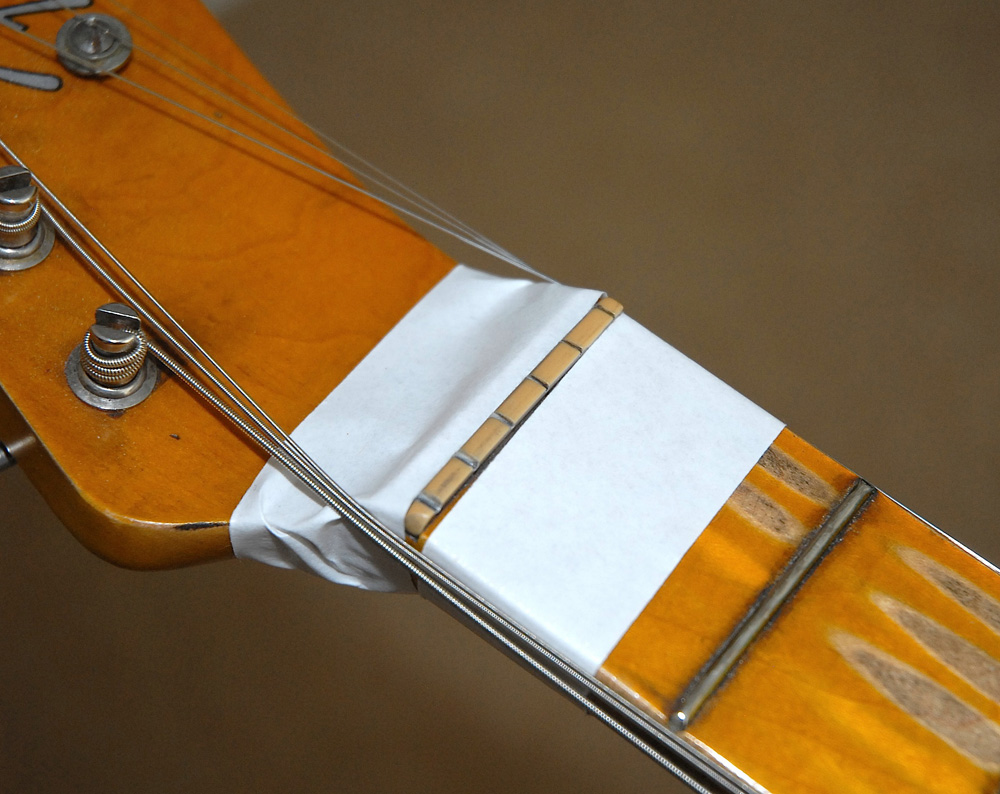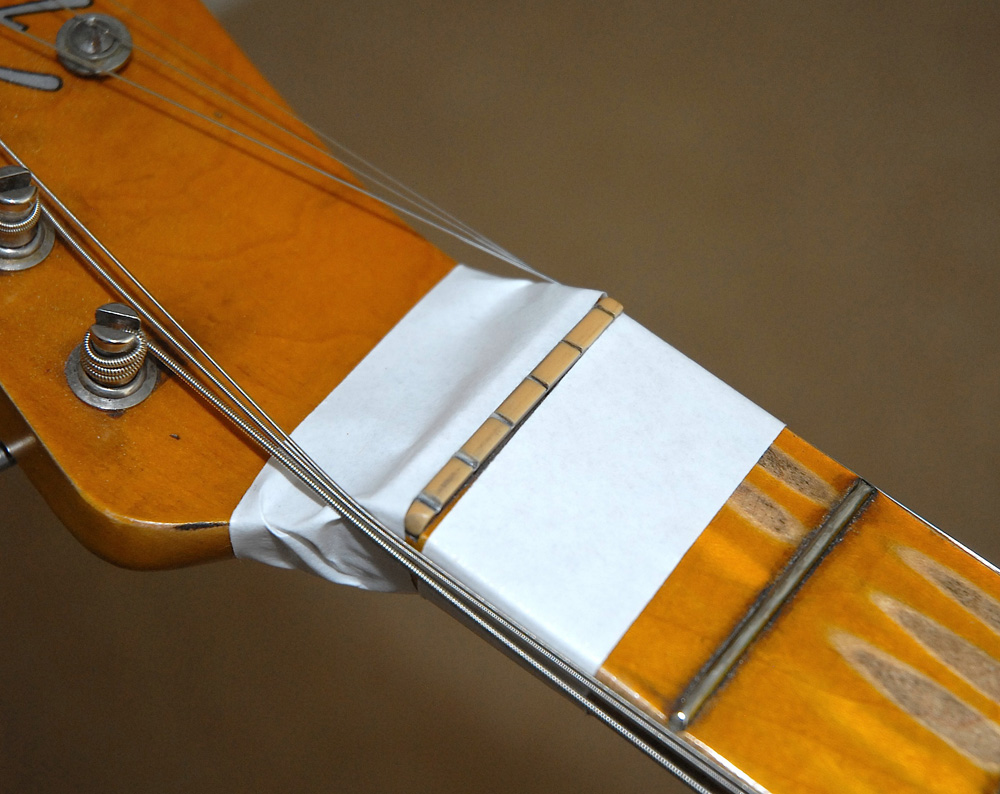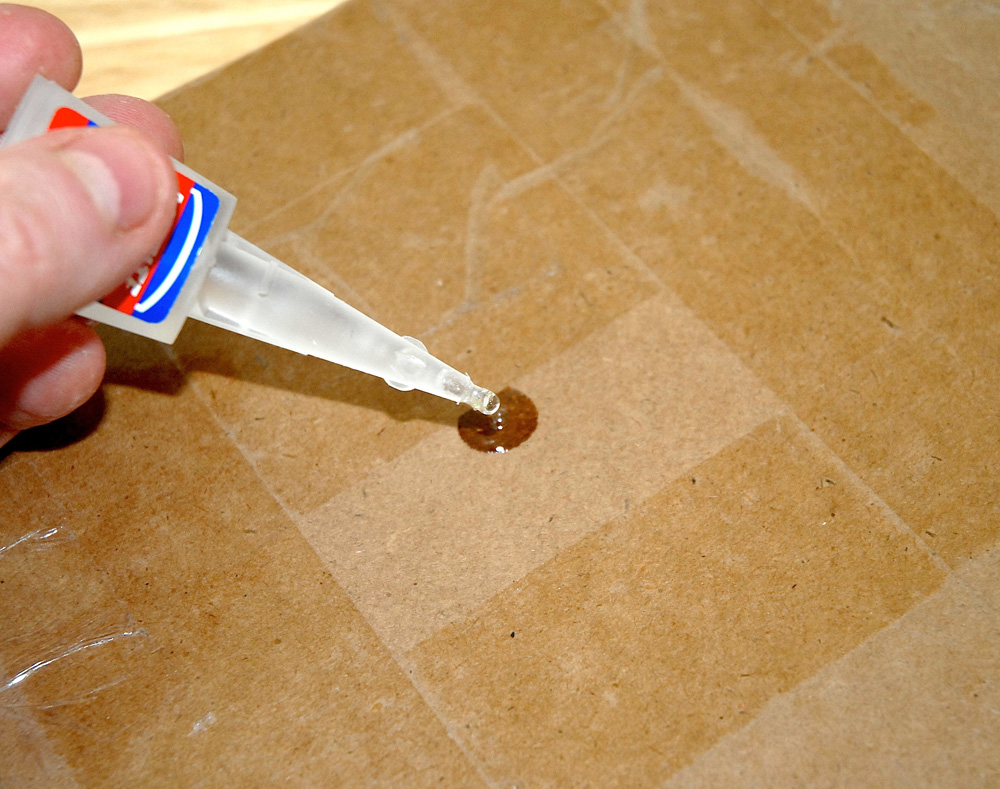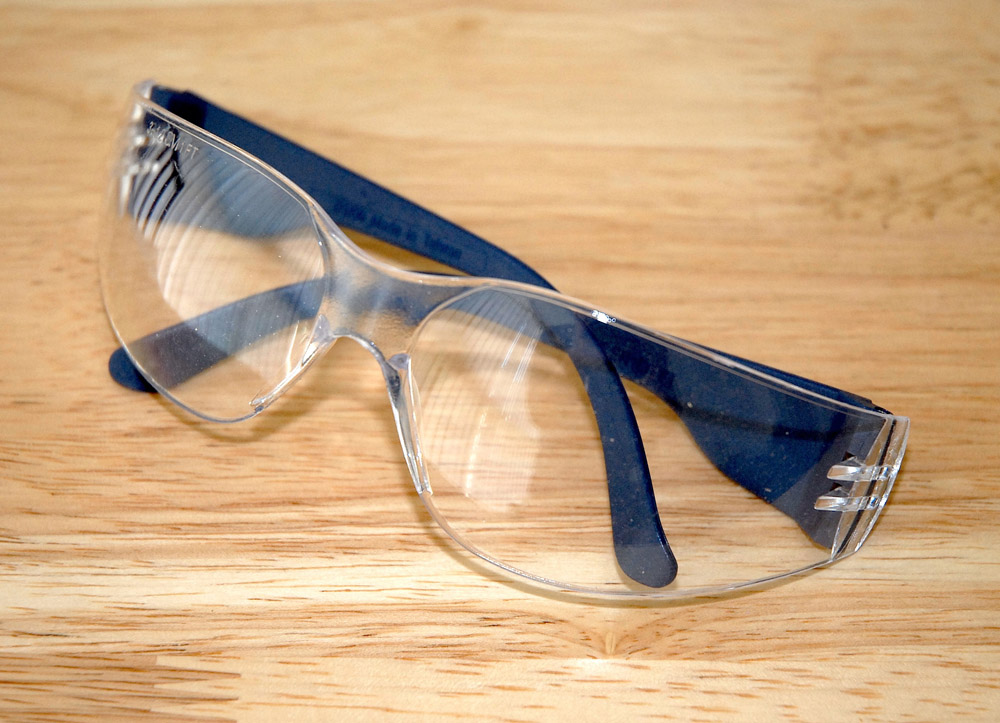The Correct Way to Use Glue on Your Guitar

This week’s column is all about bonding. By that, I mean we’re going to talk about glue.
If it seems that it’s taking a while to get to the actual process of filling and re-cutting the nut slots, then there’s a method to my apparent procrastination.
As in any guitar maintenance and repair job, every step of this task is equally important. One silly mistake and you could damage your guitar’s finish or yourself. In the many (Man, there were so many) years I worked in a music store, I saw countless guitars damaged by the inappropriate use of glue. Take your time, follow the steps, and do a good job. You’ll feel so much better about your abilities. So bear with me ...
Last time I dropped the bombshell that there are different types of superglue available. The notion of squirting glue into the slots of your guitar’s top should be enough to give you sleepless nights. For a start, you’re not going to be squirting the glue anywhere. We’re going to learn how to "feed" the glue safely and steadily into the slot so that it doesn’t run and damage your guitar’s finish.
Obviously, this is a task you should approach with caution and a steady hand. Yeah, and there’s other stuff you need to remember. Whenever you uncap any solvents, you need to be in a well-ventilated area. That means you need to open a window or be outside. Wear safety glasses, too (See photo 1 in the photo gallery below).
You might get glue on your fingers, get distracted and rub it in your eyes or something equally dangerous; and it's embarrassing to explain to the nurse at your local hospital, natch. Like I said, superglue is available in different "viscosities" or thicknesses. The stuff you find in your local supermarket can be too runny for filling slots. I can make it work, but the job is a bit more awkward.
Guitar repair supplies company Stewart-McDonald offers its superglue in a range of three main viscosities: thin, medium and thick. You can actually use superglue to repair lacquer chips. Some glue is so thin, it can be painted on with a brush. The thicker stuff is the best for filling slots, in my humble opinion, because it pretty much stays where you leave it. You’ll just have to make sure you give it plenty of time to cure.
You can order your glue from the likes of Stew-Mac (It's up to you; I don’t work for or endorse them!) or try a model-making store. They usually have different types of glue to choose from.
Armed with the righteously sticky stuff, you next have to decide how to apply it to the slots in the nut. I use plastic toothpicks or pieces of card, depending on the size of the slot. I squirt the glue onto a piece of scrap cardboard (See photo 2) then dip the toothpick or card into the sticky heap. That makes the glue easier to control and apply than attempting to squirt it into the nut slots straight from the tube. That’s just crazy.
We’re going to cover protecting the guitar’s finish around the nut (See photo 3) and loading the slots with glue in detail next time. So open a window, put on your glasses, get your glue; and bring a steady claw.
See you then.
If you simply can't get enough of Ed and his Shed, click here!



Get The Pick Newsletter
All the latest guitar news, interviews, lessons, reviews, deals and more, direct to your inbox!
Ed Mitchell was Reviews Editor on Total Guitar magazine from 2003, and his guitar-modding column, Ed’s Shed, appeared in print on both sides of the Atlantic (in both Total Guitar and Guitar World magazines). He was the Editor of The Blues Magazine from 2012-16, and a contributor to Guitarist, Classic Rock and Louder. He died in October 2022, aged 52. Between them, the websites Guitar World, Louder and MusicRadar host over 400 of his articles – among them interviews with Billy Gibbons, Paul Weller, Brian Setzer, profiles on Roy Buchanan, Duane Allman and Peter Green, a joint interview with Jimmy Page and Jack White, and dozens of guitar reviews – and that’s just the ones that made it online.
“There are so many sounds to be discovered when you get away from using a pick”: Jared James Nichols shows you how to add “snap, crackle and pop” to your playing with banjo rolls and string snaps
Don't let chord inversions bamboozle you. It's simply the case of shuffling the notes around








![Joe Bonamassa [left] wears a deep blue suit and polka-dotted shirt and plays his green refin Strat; the late Irish blues legend Rory Gallagher [right] screams and inflicts some punishment on his heavily worn number one Stratocaster.](https://cdn.mos.cms.futurecdn.net/cw28h7UBcTVfTLs7p7eiLe.jpg)


